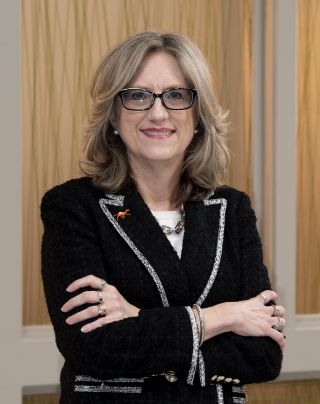Gender
A STEM Trailblazer Achieves Gender Inclusion
Recruitment, retention, and advancement strategies for STEM industries.
Posted December 20, 2023 Reviewed by Ray Parker
Key points
- Unconscious gender bias in STEM leadership remains a pervasive issue as women advance in their careers.
- Creating diversity in STEM programs is realistic and helps lay the groundwork for future success.
- Some specific research-based policies and procedures support retention, retention, and advancement.

Women in STEM face challenges that are often nebulous and difficult to identify. Since it all starts with education, I interviewed Jenna P. Carpenter, a seasoned engineering dean who has demonstrated remarkable outcomes using these interventions. Her engineering school boasts 60 percent female faculty (three times the national average).
Carpenter is the founding dean and professor of the School of Engineering at Campbell University and immediate past president of the American Society for Engineering Education (ASEE). She is an expert on issues impacting the success of women in science, technology, engineering, and math (STEM) and innovative STEM curricula.
She was awarded the 2023 ABET Claire Felbinger Award for Diversity and Inclusion, a co-recipient of the 2022 Bernard M. Gordon Prize for Innovation in Engineering and Technology Education from the National Academy of Engineering, the 2019 ASEE Sharon Keillor Award for Women in Engineering Education. In 2015, DreamBox Learning recognized her as one of the Top 10 Women in STEM Who Rock! for her advocacy.
Unpacking Unconscious Bias in STEM Leadership
Carpenter shared that there has been a significant accumulation of research demonstrating various barriers impacting the success of women in STEM, but they all boil down to unconscious bias. She explains:
“The biases that you have in the U.S. may be different if you were raised, say, in Asia. It’s called unconscious bias because we're not aware of it―it’s not the same as our conscious values and intentions. Because these biases may be opposite our intended values, it's difficult to get people to realize that we're all biased and it’s not because we're bad people—it comes from the culture in which we live. For example, young children will tell you boys are better at math and girls are better at reading. Moreover, we all have similar biases. That means that I have the same biases about women in STEM that everybody else does, even though I am a woman leader in STEM.”
Because these biases are often established early in life, they hinder women's advancement in STEM fields and whether women pursue STEM as a field of interest.
Breaking Through the First Developmental Milestone: Early Life Biases
What does it take to start breaking these barriers? Carpenter recommends the following:
- Provide role modelss. We must see people like us in STEM fields to imagine ourselves in those fields.
- Showcase the diverse opportunities within STEM and break down stereotypes about what STEM looks like as a career. Carpenter notes that we tend to have a narrow view of engineering: "You can connect engineering with almost anything you're interested in. We need to offer an accurate picture [of the opportunities]. Engineering is about design, creativity, and innovation. So, for example, if you like arts and crafts, well, you might like engineering."
- Create a supportive environment for STEM interest and exploration. Carpenter encourages parents and role models to talk with girls about biases and begin dispelling stereotypes. For example, some research indicates that for an adolescent girl, her father's opinion of whether STEM is an appropriate field for her to pursue influences her choices. If their fathers believe they can do it, "it acts like a forcefield around you"—a protective barrier from external biased messages.
Acknowledging these factors helps create a supportive environment for women throughout their STEM journeys.
Breaking Through the Second Developmental Milestone: Strategies for Recruitment, Retention, and Advancement
Carpenter shares:
“We tend to lose a lot of women 10 to 15 years into a STEM career. There's a study by Romila Singh, et al., called Stemming the Tide exploring why women who major in engineering in college don’t pursue it as a career. It’s because they've had negative experiences either on campus, in their internship, or both [due to the cultural messages]. And even if they don't, these same issues get perpetuated in the workplace. And so, 10 to 15 years in, women will often say, ‘You know, I'm done’. Sometimes they say, ‘I'm going to quit to spend more time with my family,’ because that's a socially acceptable response. But if you follow them, most go to work in another industry working just as many hours! They're just getting away from [the biased culture]. It's a huge loss. [The solution] is not fixing the women—they're not broken or deficient—and it's not fair to expect them to change the culture because there aren't enough of them to do so, unfortunately, in STEM fields. [The solution] is educating everybody about bias and its effects, and putting in policies, procedures, approaches, that help women. Because it turns out that these measures create a better workplace for everybody.”
To address biases to entry, Carpenter recommends the following strategies:
1. Create inclusive and realistic job descriptions. Carpenter notes:
“If you're going to advertise for a position, studies suggest that women won't apply unless they meet 100 percent of the requirements, so a good strategy is, instead of making a long laundry list of requirements, change the language to say, ‘We're looking for people who are interested in [this list],’ because more women will apply that way.”
2. Cast a wide net. "We send job announcements to lots of listservs and groups," Carpenter says. "There are people out there if you look."
3. Employ rubrics for evaluations. Carpenter says:
“They've done studies with two identical resumes, one with a man's name at the top and one with a woman’s name at the top. The committee will rank the man higher every time—the same resume except for the names! Using a rubric forces us to match the criteria and the experiences from the resume to back up our decisions [creating a fairer process]. Another trick: Instead of starting with all the applications and throwing the people out who aren't perfect, because we're more likely to judge women as imperfect—research suggests women have to be as much as two-and-a-half times more successful to be judged equal to a man—we flip it on its head: we look at a resume and if there's something interesting, we will throw them onto the shortlist. It makes a big difference. People don’t have to be perfect to get on that shortlist. We’ve ended up with a very diverse applicant pool using this method.”
To address biases in retention and advancement, Carpenter recommends the following strategies:
- Foster a supportive, team-based collaborative leadership style. This helps people support each other and not feel isolated. It also leads to more innovation.
- Provide growth opportunities. Not all women are provided with appropriate and sufficient growth opportunities. Evaluating what is offered to all employees and ensuring equity helps people take advantage of advancement-related opportunities.
- Create flexible policies, such as family leave and remote participation, to accommodate the diverse needs of faculty members. Instead of making people feel like they must choose between two priorities (work and home life), offering flexible options helps people stay invested in things that are important to them and continue to remain in their chosen field.
Carpenter wryly concludes, "I know it sounds crazy, but when you do what the research says to do, it works." By recognizing and rectifying biases in evaluation processes, women can have fair opportunities to advance in their careers.
Note: This post is part of a series on how organizations can transform leadership development for women, as described through the eyes of experts and women's lived experiences via interviews.
References
Wennerås, C., Wold, A. Nepotism and sexism in peer-review. Nature 387, 341–343 (1997). https://doi.org/10.1038/387341a
National Academy of Engineering. (2014). Career Choices of Female Engineers: A Summary of a Workshop. Washington, DC: The National Academies Press. https://doi.org/10.17226/18810.
Aidy, C. L., Steele, J. R., Williams, A., Lipman, C., Wong, O., & Mastragostino, E. (2021). Examining adolescent daughters' and their parents’ academic-gender stereotypes: Predicting academic attitudes, ability, and STEM intentions. Journal of Adolescence, 93, 90-104. https://doi.org/10.1016/j.adolescence.2021.09.010




